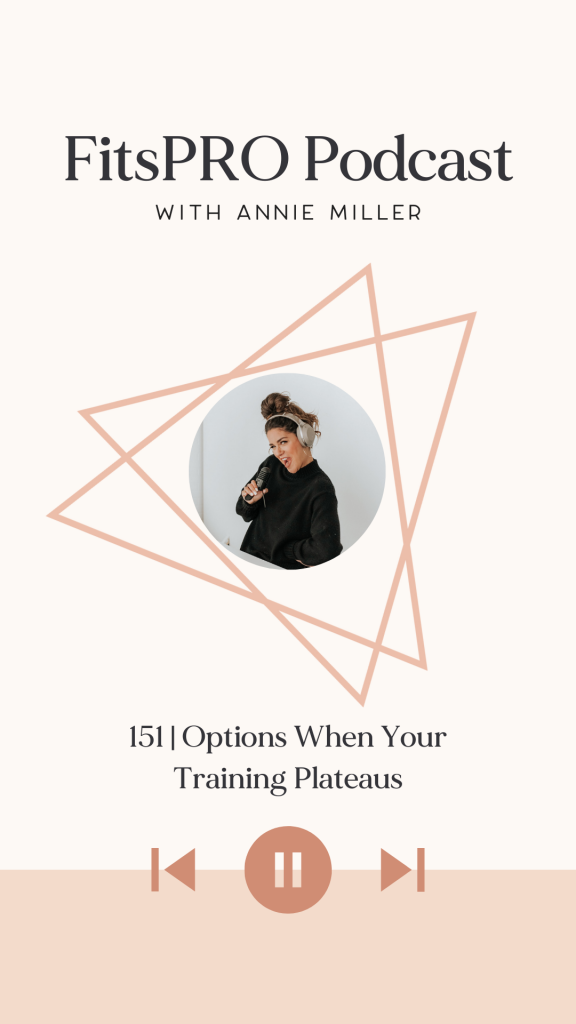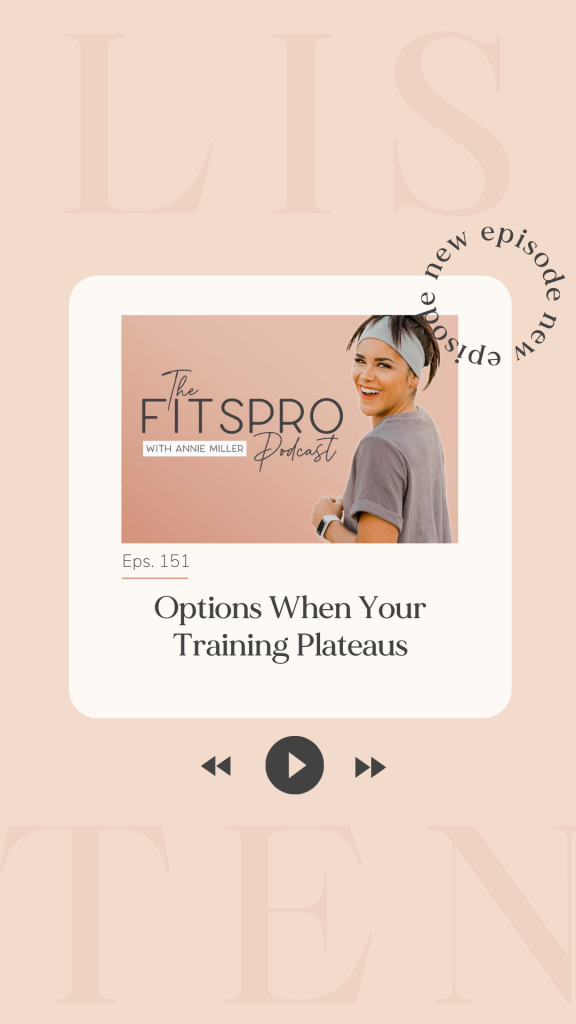the blog
welcome to
looking for something specific? find it here
Podcast: Play in new window | Download (Duration: 13:17 — 18.3MB)
Subscribe: Google Podcasts | RSS

Training plateaus are going to happen the longer you have been training for. That’s the joy of newbie gains – in that season, which can last years, you are able to make noticeable adaptations on a monthly if not weekly basis.
And when that time ends, you have likely hit a training plateau. Meaning that you are unable to increase load lifted for a given amount of reps. Or you’re unable to increase volume at a given load. Basically nothing new is happening, and it feels like you aren’t making progress. Thus, a plateau.
Luckily training plateaus are part of the process, and not the end of the world.
If you haven’t taken a deload week, that is my first suggestion before getting fancy with anything, or adding more training stimulus to yourself. If you are not making gains with your current programming and you are pushing yourself, I assume deload would be the way to go.
Doing a deload allows the body and mind time to recover from training that has happened over the past weeks and months. Not only your muscular system, but also your central nervous system. During a deload week it’s not that you do nothing, but lower the volume and intensity of the work that you’ve been doing. These workouts should not be taxing. The point is to keep yourself moving, but not going away the taxes the body or requires adaptation. Which is what we want from our normal training, right? We are applying different stimuli to the body in order to require an adaptation that builds muscle or results in better movement patterns, better mobility, higher work capacity etc. etc.
So rather than adding anything, my first suggestion is always a deload week. Do less to hopefully be able to do more.
If you have done a deload week and or have been implementing deload weeks and you are still hitting a training plateau, then you have a few other options.
Play with tempo, variation, and range of motion. These are in contrast to playing with things like volume. Which we will discuss later.
When playing with tempo, you will likely have to lower the load whether you are making the tempo faster and working on power and velocity, or slowing it down and increasing overall time under tension. Both of these scenarios require a lighter load for maximum power output and development, or obviously increasing that time under tension.
I also want to go back to the idea that less is more.
So while I might play with a variable like tempo, I am not necessarily increasing or decreasing tempo on every single lift within a work out and therefore a training phase. I may just play with tempo on one or two exercises per day to give the body a new stimulus.
Variation in range of motion kind of go hand-in-hand. So sometimes if a client is plateauing on say a dead lift or a sumo deadlifts, I might implement sumo deadlifts from a deficit on their sumo deadlifts today, and maybe rack pulls or pin pulls from a limited range of motion on conventional deadlift day. The deficit on sumo day pushes the range of motion, and it also gets after that posterior hip capsule. The pin pulls on conventional dead lift day allow the client to pull a higher load, but for a lower range of motion. Therefore giving a new stimulus to the muscles.
And I might not change much with the accessory work. Because that single change in the main lift might be enough to push them through the plateau. Range of motion is a very very powerful variable of training that I don’t think people play with often enough. Different muscle fibers are recruited within different ranges of motion. Therefore we can possibly push past a plateau by recruiting more muscle fibers in a given area than we normally would. That’s the magic of science, and honestly, simplicity.
If a client is having a training plateau with a specific movement, I would look at their weakest point of the movement and use pauses or isometrics to work past that sticking point. That could be on some thing as simple as a pull up. So recently I actually had a one on one client who has improved immensely with her chin ups and pull-ups, and really overall vertical pulling. But those last 3 inches towards the top of the bar have become a noticeable weak point in the exercise. So at least for one phase, we are keeping the volume of the exercise the same, but adding a 10 to 15 second hold at the top of the exercise after the last set. This is going to allow more time under tension in the specific joint angle that is the weakest part of the movement for this client. You can apply that to something like a hip thrust, a squat pattern, deadlifts, you name it.
I implemented isometrics, but you could also implement pausing. So one and a quarter squats, or a dead lift variation with a pause at the mid shin on the way up or the way down.
The other variable we can play with is variation.
So I might just change up the grip or the stance that a client is using for all of the same exercises. So if we were doing Bulgarian split squats with a pretty wide stance front back, I might change that to a more narrow stance in order to make it more quad dominant. If we were doing seated rows with a neutral grip, I might change it to a pronated or supinated grip, or a wider grip, or even do a complex where they’re doing 15 total reps but in a mechanical advantage set up. So wide pronated, into wide neutral, into supinated. Like a drop set.
Using a different variation of the same exercise just works and recruits slightly different muscles and or muscle fibers of the same muscle. It’s kind of the same concept as playing with range of motion.
And I want to reiterate that none of these so far have focused on making massive changes to the program. When a client hits a plateau, it’s most important to look at why the plateau is happening and if it’s with one exercise, if it’s more of a mental thing, or if they need to switch up the muscles and patterns that they are working.
The last thing that you can obviously do is what I mentioned earlier….
…which is to play with load and volume pretty extensively.
If a client has been working above 80% for five months let’s say, and you don’t seem to making progress, you can look at going into more of a metabolic phase. Because they’ve been in a very neurological phase for an extended period of time. That’s why seasons of training and long term. I station or so important. You can’t work on maximal strength all the time. We need seasons of building work capacity and overall volume of training.
Hitting a plateau might be an indicator that you need to switch up the overall goal of your meso cycle, meaning the next 3 to 4 months of training. Maybe you transition your client either out of high volume into lower volume heavier loads, or out of the heavy load, low volume into some moderate volume and moderate weight. I don’t typically suggest going zero to hero in either direction. The body will adapt best with a gradual transition. Which is also helpful for the mental game of the client.
I know I have seen athletes successfully go from extremely low volume and high loads. We are talking like 3 to 1 style wave loading into a 5 x 10 German volume training phase. It’s pretty brutal but the body will adapt. And obviously the load is relative.
This was a shorter episode, but hopefully it was helpful. It is a question that I get a lot and I think that it actually has simpler answers than people might think. Start small see how the body adapts. And avoid making massive changes if it’s not needed.
Leave the FitsPRO Podcast a review


If you find value here, on The FitsPRO Podcast, then pretty please head over to iTunes, subscribe, rate and review the show. It means the world to me when you spread my message to more humans.
Want more podcasts? Click here to skim the archives.
P.S. Save this value packed episode for later over on Pinterest!
ALL THE LINKS YOU NEED:
Free On Demand Workshop: 3 Steps To Build a Profitable Online Health and Fitness Business
Supplements: Legion Athletics Code ANNIE for 20% off
Skincare: Fré Skincare Code FDBA for at least 15% off
Bags: Vooray Code ANNIE for 20% off
I'm an adventurous introvert from Vancouver, Washington who lives on sleep + "me time." I'm a lover of lifting weights, dinosaurs, real talk and traveling with my husband. I am here to help you move better, lift more, bust the myths of the fitness industry, and inspire you to love the process.
Hey you,
The name's Annie & you're reading my thoughts. Let's get acquainted.
the whole story >
looking for something specific? find it here
THE LINKS BELOW ARE AFFILIATE LINKS
SKIN CARE
Nutrition
brands I love
working against gravity
Fre skin care
favorites
blue light blockers
klassy network
code: fdba saves you 15% off
online TRAINERS
save $50
code: ANNIE saves you 20% off
You love my style, trust my reviews, and want more Annie Miller Concepts vibes in your life? Shop my favorite brands. You get awesome products and yours truly gets a little kick-back.
